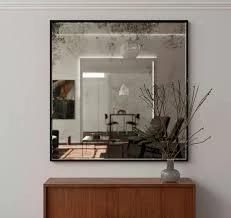

Thin Mirror Glass A Modern Aesthetic in Architecture and Design
Thin mirror glass, a remarkable innovation in the field of materials, has become increasingly popular in contemporary architecture and design. Characterized by its lightweight nature and sleek appearance, this material offers both functionality and elegance. The evolution of thin mirror glass marks a significant advancement, blending high technology with artistic expression.
One of the primary advantages of thin mirror glass is its versatility. It can be utilized in a wide array of applications, from building facades to interior design elements. Architects and designers are constantly exploring new ways to incorporate this innovative material into their projects. The reflective quality of the glass not only enhances aesthetic appeal but also serves practical purposes. For instance, in urban environments, buildings clad in thin mirror glass can create the illusion of more space, reflecting the surrounding landscape and sky, thus harmonizing with their environment.
Moreover, thin mirror glass plays a crucial role in energy efficiency
. With advancements in coatings and treatments, modern thin mirror glass can reflect heat and light, reducing the need for artificial lighting and climate control within buildings. This energy-saving quality contributes to sustainability efforts in the construction industry, aligning with global initiatives aimed at reducing carbon footprints. By minimizing energy consumption, architects can create structures that are not only visually stunning but also environmentally friendly.
In addition to its practical benefits, thin mirror glass adds a dynamic element to design. The play of light and reflection can create mesmerizing visuals, turning ordinary spaces into extraordinary experiences. For instance, in a retail setting, thin mirror glass can be used to create stunning display windows that attract customers while showcasing merchandise beautifully. When employed in public spaces, such as parks or plazas, it can offer interactive elements where visitors can see themselves reflected alongside their surroundings, fostering a sense of connection to the environment.
Another noteworthy aspect of thin mirror glass is its durability. Unlike traditional mirrors, which can be fragile and prone to breakage, advancements in production techniques have made thin mirror glass more robust. This durability ensures that it can withstand harsh weather conditions, making it an ideal choice for external applications. Additionally, the ease of cleaning and maintenance enhances its practicality in high-traffic areas.
Furthermore, thin mirror glass is increasingly being used in furniture design. From coffee tables to wall panels, this material is being utilized to create unique and modern pieces that elevate any living space. The reflective surface can enhance natural light, making interiors feel more open and inviting. Designers are experimenting with various shapes and structures, pushing the boundaries of traditional furniture design.
In conclusion, thin mirror glass represents a fusion of technology, art, and functionality. Its versatility, energy efficiency, dynamic visual impact, durability, and applications in both architecture and furniture design make it a favored choice among designers and architects. As the demand for sustainable and aesthetically pleasing materials continues to grow, thin mirror glass is poised to play an integral role in shaping the future of modern design. Embracing this innovative material enables us to reimagine our spaces, creating environments that are not only beautiful but also resonate with the principles of sustainability and connectivity.